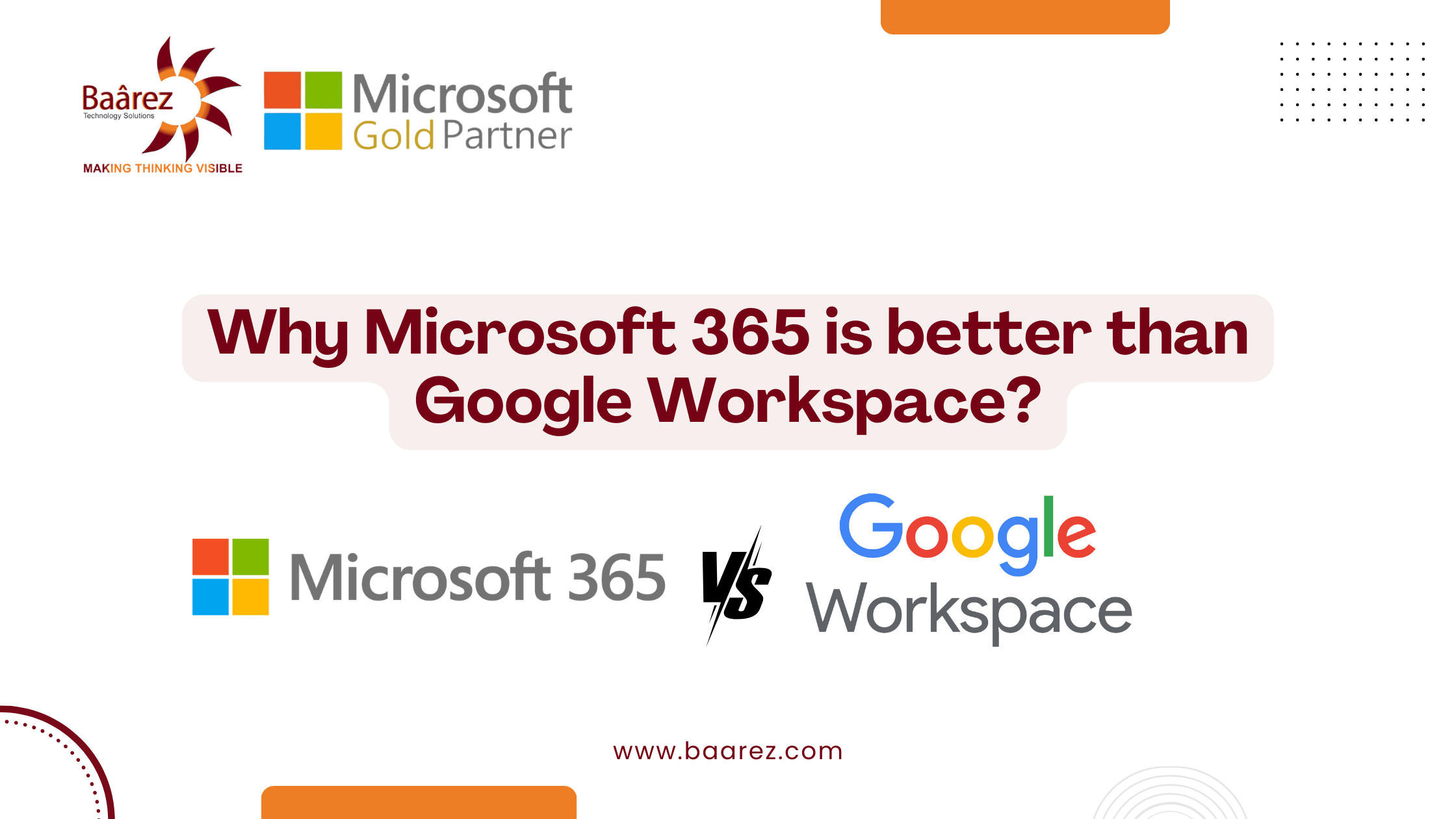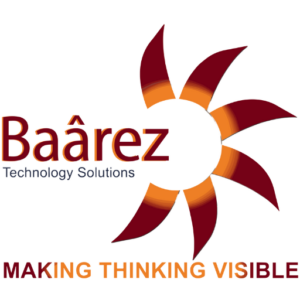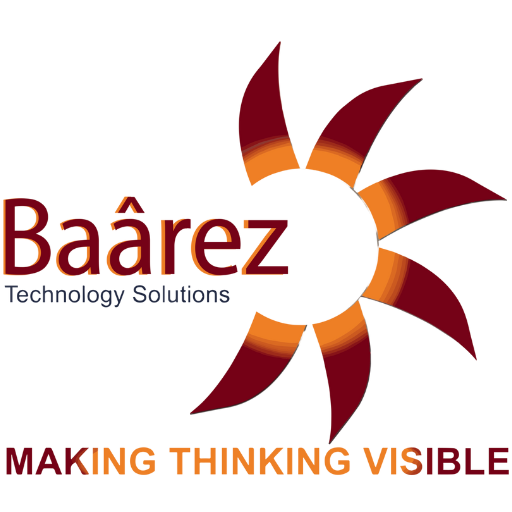
In the rapidly evolving digital workspace, choosing the right productivity suite can be a game-changer for any business. With the increasing demand for remote work solutions, collaborative tools, and secure platforms, many organizations face a dilemma: Microsoft 365 or Google Workspace?
While both platforms are strong contenders, Microsoft 365 has emerged as a smart alternative to Google Workspace, especially for businesses looking for a comprehensive, secure, and scalable ecosystem.
Microsoft 365 (formerly Office 365) is not just about Word, Excel, and PowerPoint. It’s a full-featured cloud-based productivity suite that integrates communication, collaboration, analytics, project management, and AI-powered automation into a single unified platform.
Why This Guide Matters
Whether you’re a small startup, a growing mid-sized company, or a large enterprise, this guide will help you make an informed decision. If you’re already using Google Workspace, this might be your sign to consider a switch. And if you’re just starting, you’ll learn why Microsoft 365 should be your top choice from day one.
Table of Contents
ToggleWhy Microsoft 365 Outshines Google Workspace for Your Business
Choosing a productivity suite is more than just picking tools—it’s about empowering your team with a secure, intelligent, and integrated digital workspace. While Google Workspace offers simplicity and cloud-native tools, Microsoft 365 delivers a deeper, enterprise-ready ecosystem designed to enhance every aspect of modern work. Here’s a comprehensive breakdown of why Microsoft 365 is a smarter alternative to Google Workspace.
1. Superior Collaboration Capabilities
Microsoft 365 redefines how teams work together—whether in the office or remotely. While Google Docs and Sheets offer real-time collaboration, Microsoft 365 elevates this experience with advanced co-authoring, version control, and integrated communication tools.
Key Features:
- Real-time Co-authoring in Word, Excel, PowerPoint across devices.
- Microsoft Teams: A central hub combining chat, video conferencing, file sharing, and app integration—far beyond what Google Meet or Chat offers.
- SharePoint & OneDrive: Seamlessly manage, store, and share files securely across your organization.
- Outlook Calendar Integration: Tight scheduling and meeting sync with Teams.
Comparison Table: Collaboration Tools
Feature | Microsoft 365 | Google Workspace |
Real-Time Document Editing | ✔️ Word, Excel, PowerPoint | ✔️ Docs, Sheets, Slides |
Integrated Team Chat | ✔️ Microsoft Teams | ✔️ Google Chat |
Video Conferencing | ✔️ Teams with advanced scheduling | ✔️ Google Meet |
File Storage | ✔️ OneDrive (1TB/user standard) | ✔️ Google Drive (30GB-2TB/user) |
Intranet & Knowledge Management | ✔️ SharePoint | ❌ Limited via Sites |
2. Desktop and Offline Applications
One of the most significant advantages Microsoft 365 holds over Google Workspace is its robust suite of desktop applications. While Google’s tools are primarily web-based, Microsoft offers full-featured desktop apps that work seamlessly both online and offline—a vital feature for professionals working in environments with intermittent or no internet access.
Key Benefits of Microsoft 365’s Desktop and Offline Capabilities:
- Full Office Suite on Desktop: Includes Word, Excel, PowerPoint, Outlook, OneNote, Access, and Publisher—with more advanced features than their web counterparts.
- Offline Editing: Work on documents offline, with changes syncing automatically once connected to the internet.
- Consistent User Experience: Whether you’re online or offline, the interface and performance remain reliable.
- High-Level Formatting Tools: Desktop versions offer advanced formatting, macros, pivot tables, and VBA scripting—features not available in Google Docs or Sheets.
- Enhanced File Compatibility: Microsoft apps natively support a wider range of file types and legacy formats, reducing conversion issues.
Comparison Table: Offline and Desktop Usage
Feature | Microsoft 365 | Google Workspace |
Full Desktop Applications | ✔️ Available for all core apps | ❌ Not available |
Offline Editing Support | ✔️ Robust with auto-sync | ⚠️ Limited with Chrome extensions |
File Format Compatibility | ✔️ Supports legacy + modern formats | ⚠️ Issues with .docx/.xls/.pptx |
Advanced Functionality (Macros, etc.) | ✔️ Built-in | ❌ Not supported |
3. Superior Security and Compliance
When it comes to protecting sensitive business data, Microsoft 365 provides enterprise-grade security and unmatched compliance capabilities—making it the smarter choice for businesses operating in highly regulated environments.
Security is no longer just an IT concern—it’s a business priority. Microsoft 365 leads with an integrated security framework that helps organizations detect threats, protect data, manage identities, and ensure regulatory compliance.
Microsoft 365 Security Features:
- Microsoft Defender for Office 365: Protects against phishing, malware, ransomware, and zero-day threats.
- Multi-Factor Authentication (MFA): Built-in MFA ensures secure logins across devices and apps.
- Data Loss Prevention (DLP): Automatically detects and blocks sensitive information sharing.
- Azure Information Protection: Classifies, labels, and protects data based on sensitivity.
- Microsoft Purview: Enables audit trails, compliance management, and eDiscovery for legal needs.
Comparison Table: Security & Compliance
Feature | Microsoft 365 | Google Workspace |
Built-in Threat Protection | ✔️ Microsoft Defender | ⚠️ Basic spam/malware filtering |
Multi-Factor Authentication | ✔️ Native + Conditional Access | ✔️ Supported but limited configuration |
Data Loss Prevention | ✔️ Extensive, with templates | ⚠️ Available only on Enterprise plans |
Regulatory Compliance (GDPR, HIPAA, ISO) | ✔️ Broad compliance certifications | ✔️ But fewer customization options |
Insider Risk Management | ✔️ Advanced, via Microsoft Purview | ❌ Not natively supported |
Supported Compliance Standards in Microsoft 365:
- GDPR (General Data Protection Regulation)
- HIPAA (Health Insurance Portability and Accountability Act)
- ISO/IEC 27001, 27018
- SOC 1, SOC 2, SOC 3
4. Enterprise-Level Data Analytics
In today’s data-driven economy, the ability to turn information into actionable insights is a competitive edge. Microsoft 365 offers enterprise-grade data analytics tools that go far beyond anything offered in Google Workspace—making it the preferred choice for businesses looking to make smarter, faster decisions.
Key Analytics Capabilities in Microsoft 365:
- Power BI Integration: Seamlessly connects with Excel, SharePoint, Dynamics 365, and other data sources to create real-time dashboards and interactive visual reports.
- Excel’s Advanced Analytics: Includes Power Query, Power Pivot, and data modeling capabilities that allow for complex analysis without external tools.
- Workplace Analytics: Offers deep insights into collaboration patterns, meeting effectiveness, and employee productivity.
- Microsoft Graph: Leverages organizational data to provide personalized experiences and predictive insights across apps.
- Viva Insights: Delivers employee wellbeing and productivity data, supporting HR and leadership teams in decision-making.
Comparison Table: Analytics & Reporting
Feature | Microsoft 365 | Google Workspace |
Business Intelligence Tool | ✔️ Power BI | ⚠️ Limited via Data Studio |
Advanced Excel Capabilities | ✔️ Power Query, PivotTables, VBA | ⚠️ Basic formulas and charts |
Workplace Productivity Insights | ✔️ Viva Insights, Workplace Analytics | ❌ Not available |
Cross-App Data Integration | ✔️ Microsoft Graph | ⚠️ Manual or via third-party tools |
Predictive Analytics | ✔️ With AI support | ❌ Minimal |
5. Comprehensive Integration and Scalability
In an ecosystem where software compatibility and seamless growth are vital, Microsoft 365 clearly stands out. Designed for businesses of all sizes—from startups to global enterprises—Microsoft 365 offers superior integration capabilities and unmatched scalability compared to Google Workspace.
Why Integration Matters:
Modern businesses rely on a wide range of apps: CRM systems, project management tools, HR platforms, and legacy software. Microsoft 365 doesn’t just play well with others—it becomes the central hub of your digital workspace.
Key Integration Highlights:
- Native integration with Dynamics 365, Power Platform (Power BI, Power Apps, Power Automate), and Azure.
- Seamless connection with third-party tools like Salesforce, ServiceNow, SAP, HubSpot, and more via Microsoft Graph and Power Automate.
- Centralized identity and access management through Azure Active Directory.
- Deep integration with Microsoft Teams, allowing apps like Trello, Adobe Creative Cloud, and Asana to function inside the workspace.
- Embedded automation and workflow creation using Power Automate, enabling “If-Then” logic across tools and services.
Scalability Features:
- Flexible licensing plans to support teams from 1 to 100,000+ users.
- Automatic provisioning and de-provisioning of users via Azure AD.
- Role-based access control (RBAC) and group policy management.
- Multi-geo support for global data residency and compliance.
Integration Comparison Table
Feature | Microsoft 365 | Google Workspace |
Integration with CRM/ERP systems | ✔️ Dynamics, Salesforce, SAP, etc. | ⚠️ Limited direct integration |
Custom Workflow Automation | ✔️ Power Automate (No-code/Low-code) | ⚠️ Via Apps Script or third-party tools |
Identity and Access Management | ✔️ Azure AD, Conditional Access | ⚠️ Basic via Google Admin |
Cross-App Experience (Teams, Outlook) | ✔️ Deeply embedded ecosystem | ⚠️ Fragmented experience |
Global User & License Management | ✔️ Supports enterprise-wide provisioning | ⚠️ Manual for larger teams |
6. Robust Project and Task Management
Managing multiple tasks, deadlines, and team responsibilities is a daily challenge for modern businesses. While Google Workspace offers basic task and calendar tools, Microsoft 365 delivers a powerful, integrated suite for project and task management—tailored for teams who need structure, visibility, and collaboration at scale.
Microsoft 365 Tools for Project and Task Management:
Tool | Purpose | Key Features |
Microsoft Planner | Team task tracking and visual Kanban boards | Drag-and-drop UI, file attachments, deadlines, checklists |
Microsoft Project | Full-scale project management with timelines & Gantt charts | Task dependencies, resource allocation, time tracking |
To Do | Personal task organization | Daily planning, smart suggestions, flagged emails from Outlook |
Microsoft Teams | Unified workspace for team discussions + task tracking | Task assignment, @mentions, shared files, integration with Planner |
Loop Components | Real-time collaborative blocks inside Teams/Outlook | Co-authoring checklists, tables, notes in conversations |
Features That Outperform Google Workspace:
- Advanced Timeline and Gantt Charts via Microsoft Project.
- Cross-platform task sync—create a task in Outlook, see it in To Do, assign it in Planner.
- File and comment integration directly within tasks (no switching tabs or apps).
- Built-in notifications, reminders, and automation with Power Automate.
- Granular permissions and role-based access—ideal for large teams or departments.
Comparison: Microsoft 365 vs Google Workspace – Task & Project Tools
Feature | Microsoft 365 | Google Workspace |
Team Kanban Boards | ✔️ Planner | ⚠️ Basic with Google Tasks |
Gantt Charts & Dependencies | ✔️ Microsoft Project | ❌ Not available |
Personal Task Manager | ✔️ To Do with Outlook Integration | ✔️ Google Tasks (limited) |
Real-time Task Collaboration | ✔️ Loop + Teams | ⚠️ Only via Docs/Sheets manually |
Integration with Communication Apps | ✔️ Embedded in Teams and Outlook | ⚠️ Manual syncing with Gmail/Calendar |
Automate and Scale Task Management
With Power Automate, businesses can create workflows such as:
- Auto-assigning tasks when a document is uploaded.
- Notifying team leads when a task is overdue.
Creating recurring task reminders based on project milestones.
7. AI-Powered Productivity and Automation
In the era of intelligent workspaces, AI isn’t a luxury—it’s a necessity. Microsoft 365 embeds AI-powered features across its suite, transforming how businesses operate, collaborate, and innovate. Unlike Google Workspace, which offers basic smart suggestions, Microsoft 365 delivers advanced automation, intelligent insights, and productivity boosters tailored for business users.
Key AI Capabilities in Microsoft 365:
Tool / Feature | What It Does | Business Impact |
Microsoft Copilot | AI assistant across Word, Excel, PowerPoint, Outlook, and Teams | Drafts emails, creates reports, summarizes meetings |
Excel AI Insights | Detects patterns, forecasts trends, and explains data automatically | Saves time on manual data analysis |
Word Smart Compose | Context-aware writing suggestions and auto-corrections | Improves writing quality and consistency |
Outlook Scheduler | Suggests optimal meeting times and automates email follow-ups | Reduces email overload |
Power Automate (AI Builder) | Automates complex tasks using custom AI models | Speeds up workflows across departments |
Viva Insights (AI-driven) | Offers personalized work and wellbeing recommendations | Supports employee engagement and performance |
AI Productivity Comparison
Feature | Microsoft 365 with AI (Copilot & Power Platform) | Google Workspace (Smart Compose & Duet AI) |
Document Generation | ✔️ Full-document creation with contextual AI | ⚠️ Limited suggestions |
Data Forecasting in Sheets | ✔️ Predictive modeling, anomaly detection | ⚠️ Limited trendline analysis |
Meeting Summaries & Actions | ✔️ Teams + Copilot | ⚠️ Duet AI limited to certain meeting types |
Email Workflow Automation | ✔️ Outlook + Power Automate | ⚠️ Minimal automation options |
Custom AI Models | ✔️ Power Platform AI Builder | ❌ Not supported |
Microsoft 365: The Smart Choice for Enhanced Productivity and Security
When choosing a digital workspace for your business, the stakes are high. You need more than just email and storage—you need a comprehensive, secure, scalable, and intelligent platform that supports your team’s productivity and growth. That’s exactly what Microsoft 365 delivers, making it a smart alternative to Google Workspace.
Summary of Why Microsoft 365 Outshines Google Workspace:
Category | Microsoft 365 Highlights | Google Workspace Limitations |
Collaboration | Integrated Teams, Office, and real-time co-authoring | Fragmented experience |
Offline/Desktop Access | Full Office suite apps with rich features | Primarily browser-based |
Security & Compliance | Zero Trust, DLP, ATP, and over 1,000 compliance offerings | Limited enterprise-grade features |
Project & Task Management | Planner, To Do, Project, Teams Loop | Basic task tools only |
Data & Business Intelligence | Power BI and Excel AI integration | No built-in BI tools |
AI & Automation | Copilot, Power Automate, AI Builder | Basic smart suggestions and Duet (limited) |
Integration & Scalability | Azure AD, Dynamics, Power Platform, custom workflows | Limited external integrations |
Why Businesses Are Making the Shift
- Small Businesses: Benefit from robust tools without hiring large IT teams.
- Enterprises: Enjoy the scale, governance, and compliance needed to grow across regions.
Remote & Hybrid Teams: Rely on Microsoft Teams, OneDrive, and Loop for effective distributed work.
🚀 Schedule Your Free Demo with Baarez Technology Solutions
Ready to unlock the full potential of Microsoft 365 for your organization?
Baarez Technology Solutions, a certified Microsoft Gold Partner, brings you expert deployment, migration, and support services tailored to your business needs. From licensing to integration, we make your transition smooth, secure, and scalable.
👉 What You’ll Get in the Demo:
- Personalized walkthrough of Microsoft 365 features
- Comparison with your current workspace setup
- Guidance on licensing and cost optimization
- Live Q&A with our certified Microsoft consultants
🔗 Schedule Your Free Demo Now
Empower your team. Secure your data. Accelerate your growth.


